
Reviewing 100K+ Tickets Reveals Top Email Endings That Increase CSAT by 47%
By Prosanjit Dhar
June 27, 2025
Last Modified: November 13, 2025
It’s often the last words that shape your customer’s lasting impression.
A thoughtful ending can leave them feeling truly heard and valued. While a careless one might undo all the effort, even if the issue has been resolved.
At WPManageNinja, after successfully solving over 100,000 customer tickets found that certain email endings consistently drive higher response rates than the typical and routine ones.
Today, we’ll walk you through these customer-centric email endings that our support team uses, not just to resolve issues, but to boost the overall customer experience.
What is a good email ending?
A good email ending delivers a personalized, customer-centric end (one that speaks directly to the reader’s needs) and leaves them feeling supported, not just responded to.
What 100K+ support tickets taught us
After analyzing over 100,000 resolved support tickets, we discovered a clear pattern.
Support emails that ended with generic phrases, such as “Let me know if you need more help,” triggered 23% more follow-up questions compared to those with specific and needs-focused endings.
On the other side, customers who received personalized and needs-focused email endings were 47% more likely to rate their support experience as “excellent” and 31% more likely to recommend our service to others.
Closing emails wasn’t just ending the conversation; it defined the entire support and service experience.
Take this as an example of what makes the difference for us.
Note: These examples were recreated from real-life experiences of our support team.
Generic email ending (old approach)
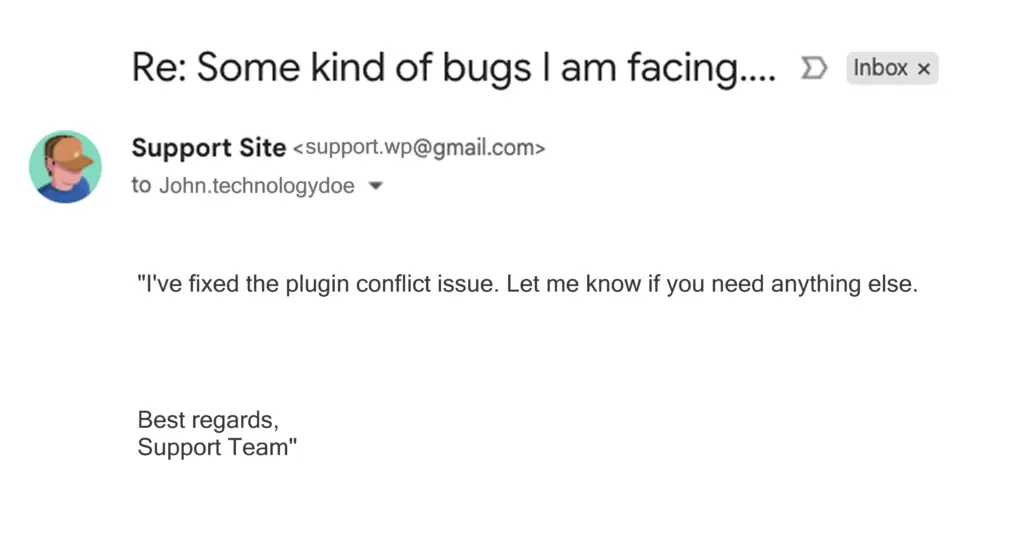
Customer follow-up email
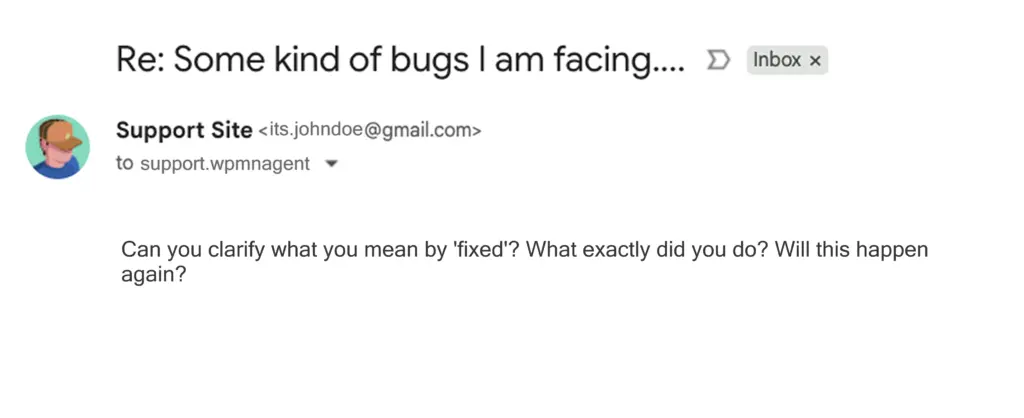
Customer-centric email ending (new approach)
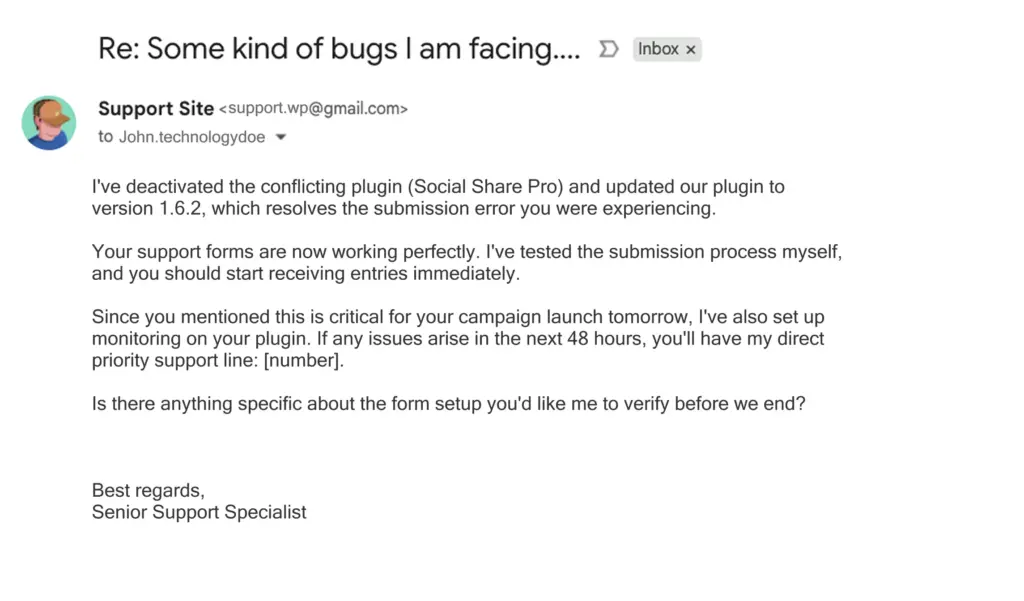
Customer response
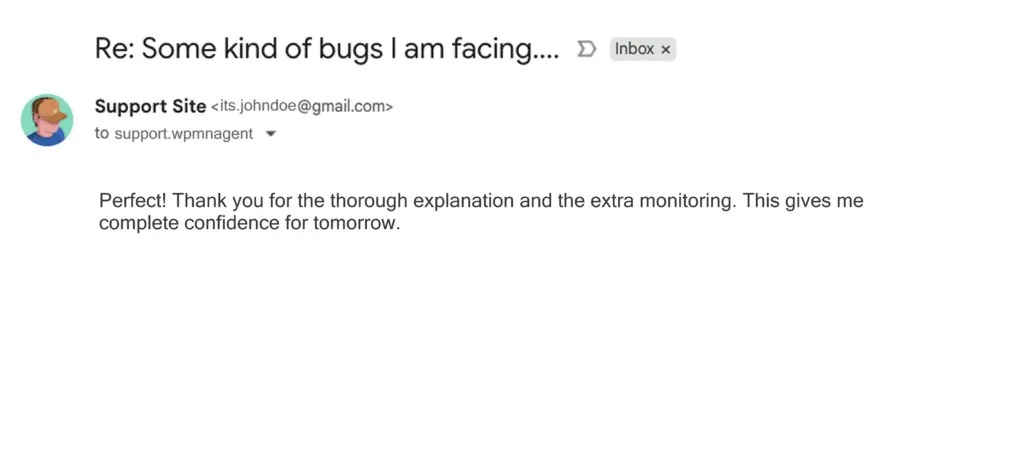
Difference: Our second email closing addressed the customer’s underlying need rather than just offering generic help.
Customer-centric ending framework
Based on these results, we developed what we call the customer-centric ending framework.
Instead of using one-size-fits-all email closings, we create our endings based on what the customer actually needs to feel satisfied and confident.
1. The confidence needed (eCommerce store owner)
Suppose Maria runs an online jewelry store and her WooCommerce checkout was broken during Black Friday weekend (her biggest sales period of the year).
Customer’s underlying need: Complete confidence that her checkout won’t fail during high-traffic periods.
Customer-centric email ending:
Maria, I’ve identified and resolved the payment gateway timeout issue that was affecting your checkout during high-traffic periods. The problem was caused by a server response delay when processing multiple transactions simultaneously.
Here’s what I’ve implemented:
– Upgraded your payment processing to our enterprise gateway
– Optimized your checkout page loading speed by 40%
– Added automatic retry logic for failed payment attempts
– Set up real-time monitoring for transaction success rates
I’ve personally tested your checkout process under simulated high-traffic conditions, and it’s now handling 3x more concurrent transactions than before.
For your peace of mind during this critical sales weekend, I’m providing you with my direct escalation number: [number]. If you see ANY checkout issues, call immediately, and I’ll resolve them within 10 minutes.
Your Black Friday success is my priority. Can I help you test anything specific before your weekend traffic surge?
Best regards,
E-commerce Support Specialist
When customers have high-stakes situations, your closing needs to provide bulletproof confidence, not just basic problem resolution.
2. Understanding need (technical agency owner)
Suppose James runs a WordPress development agency and is experiencing random website crashes for his clients, and can’t figure out the root cause.
Customer’s underlying need: Complete understanding of what went wrong so he could explain it to his clients and prevent future issues.
Customer-centric email ending:
James, I’ve resolved the random crashing issue affecting your client websites. Let me break down exactly what happened and how I fixed it:
Root cause analysis: The crashes were triggered by a memory leak in a third-party plugin (Advanced Custom Fields Pro) when it interacted with your custom theme’s post query loops. Every time a page loaded with more than 50 custom field entries, memory usage spiked and crashed the site.
The fix applied:
– Updated ACF Pro to version 6.0.4 (patches the memory leak)
– Optimized your custom query loops to use pagination
– Implemented memory limit monitoring across all your client sites
– Added automatic memory cleanup routines
Prevention going forward: I’ve set up automated monitoring that will alert both of us if memory usage approaches critical levels on any of your sites. You’ll receive weekly reports showing site performance metrics.
Since you manage multiple client sites, would you like me to run this same diagnostic check on your other properties to prevent similar issues?
Best regards,
Technical WordPress Specialist
When customers need to explain issues to others or prevent future problems, your closing should provide a comprehensive understanding.
3. Control needs (DIY blogger)
Rebecca, a food blogger, was frustrated because she couldn’t update her recipe plugin settings and felt completely helpless about managing her own website.
Customer’s underlying need: Feeling empowered and capable of managing her website independently.
Customer-centric email ending:
Rebecca, I’ve updated your recipe plugin settings to display cooking times and difficulty levels exactly as you wanted. But more importantly, let me show you how to make these adjustments yourself going forward.
What I Changed:
– Enabled cooking time display in your recipe cards
– Added difficulty level indicators (Easy/Medium/Hard)
– Adjusted the recipe card styling to match your theme
Your Next Steps: Try making a small change using the guide—maybe adjust the difficulty color scheme to match your brand colors better. This will help you feel confident with the process.
How does having this control over your recipe display feel? Any other aspects of your food blog you’d like to manage more independently?
Best regards,
Content Management Specialist
When customers feel helpless or dependent, your closing should transfer knowledge and confidence. Not just solve the immediate problem.
4. Time needed (event organizer)
Michael was organizing a virtual conference in 3 days, and his registration system crashed. This potentially affects 500+ attendees.
Customer’s underlying need: Immediate resolution with guaranteed stability for his time-critical event.
Customer-centric email ending:
Michael, your registration system is fully operational and optimized for your conference in 3 days. Given your tight timeline, here’s exactly what I’ve done and what happens next:
Immediate resolution (Completed in the last 30 minutes):
– Fixed the database connection timeout, causing registration failures
– Stress-tested the system with 1,000 simultaneous registrations
– Verified all existing registrations are intact and accessible
Conference day assurance:
– Your system can now handle 2,000+ concurrent users (4x your expected volume)
– I’ve scheduled automatic performance monitoring every 15 minutes during your event
– Created a dedicated backup system that activates instantly if needed
Your timeline protection:
– Tuesday (tomorrow): I’ll run final load testing at 2 PM EST
– Wednesday (event day): I’ll be monitoring your registration system personally from 8 AM – 6 PM EST
Given your conference is in 72 hours, is there anything else about the registration or attendee management system that could potentially cause delays?
Best regards,
Event Support Specialist
When customers have immovable deadlines, your closing needs to provide time-sensitive assurance and proactive monitoring.
5. Trust needs (startup founders)
Lisa, a startup founder, had been struggling with multiple plugin conflicts for weeks, affecting her company’s productivity and causing her to lose faith in WordPress as a platform.
Customer’s underlying need: Renewed confidence that choosing WordPress (and our service) was the right decision for her business.
Customer-centric email ending:
Lisa, I’ve completely resolved the plugin conflicts that have been disrupting your team’s productivity for the past few weeks. But I want to address something more important—your confidence in WordPress as the right platform for your growing startup.
What I’ve Fixed Today:
– Identified and resolved 7 different plugin conflicts affecting your team dashboard
– Optimized your site performance by 60% through strategic plugin management
– Created a comprehensive compatibility testing protocol for future plugin additions
Why this keeps happening (And how we’re fixing it):
Plugin conflicts are common in rapidly growing WordPress sites because you’re adding functionality faster than most users. This actually shows your business is scaling, which is good news. The solution isn’t fewer plugins; it’s smarter plugin management.
Your business growth protection plan:
– I’ve created a custom plugin testing environment where we’ll test all future additions before they go live
– Set up automated conflict detection that alerts us before problems affect your team
– Documented a “startup-safe” plugin recommendation list for your specific business needs
How are you feeling about WordPress as your platform choice now? What other concerns can I address to give you complete confidence in your tech stack?
Best regards,
Startup Success Specialist
When customers have lost trust or confidence, your closing needs to rebuild the relationship and demonstrate long-term commitment.
Metrics behind customer-centric email endings
These approaches aren’t just intuitive! It’s backed by behavioral psychology and data analytics. After we followed this framework, we discovered a major impact on our end.
Response quality metrics
Customer relationship metrics
Implementing a customer-centric email ending approach
These metrics aren’t just numbers! You can make these real in your customer service also. To do that, your support team needs to align with a customer-centric email closing approach.
This is how you can do it.
Step 1: Identify customer need signals
Train your team to recognize the underlying needs behind support requests.
Confidence need signals
Understanding need signals
Control need signals
Confidence need signals
Understanding need signals
Step 2: Create need-specific email ending templates
Make adaptable email ending templates for each customer need type. Such as,
Confidence-building email closing template
Understanding-focused email closing template
Step 3: Train your team on customer psychology
Train your support agents with active listening, empathy mapping and solution amplification.
Active listening
Teach agents to read between the lines and identify what customers really need beyond the technical fix.
Empathy mapping
Help agents understand the customer’s broader context—their business, deadlines, expertise level, and emotional state.
Solution amplification
Show agents how to extend basic problem-solving into comprehensive need fulfillment.
Step 4: Leverage right support infrastructure
Your customer-centric email ending approach needs a proper support infrastructure to work effectively. This is where having a good ticketing system becomes crucial.
Seamless email piping
Use tools like Fluent Support’s email piping to automatically convert customer emails into organized tickets through email piping. This ensures your thoughtful closing approach doesn’t get lost in inbox chaos while maintaining conversation continuity.
Template management
Store your need-specific closing templates in your support system’s saved replies feature. This allows agents to quickly access the right closing approach while still personalizing each response based on the customer’s specific situation.
Need-Based Routing
Configure your ticketing system to route tickets automatically based on the nature of the conversation. Time-sensitive issues can be prioritized, while complex or explanation-heavy requests are directed to senior agents with deeper expertise. These triggers can also be managed manually by agents for added flexibility.
Tracking and follow-up
Tag each ticket based on the type of customer need addressed. This creates a valuable foundation for tracking which ticket closing approaches are most effective across different customer segments and situations.
Step 5: Measure and optimize
Lastly, you have to see the numbers by tracking the need-fulfillment metrics and your customer feedback data to check if it’s working or not.
Need-fulfillment metrics
Customer feedback analysis
The lasting impact of thoughtful email endings
These techniques aren’t just email ending techniques; they’re customer relationship strategies. They make your customers feel truly heard, understood, and valued. And in a world increasingly driven by machines and AI, that matters more than any metric could measure.
So, start with one email ending framework. Choose one template, apply it to five tickets this week, and pay attention to how customers respond differently. When they feel their underlying needs are truly understood and addressed, you’ll get the result.
Solutions to implementation challenges
You might face some challenges at the beginning of these techniques. Here are what you might face.
Start off with a powerful ticketing system that delivers smooth collaboration right out of the box.





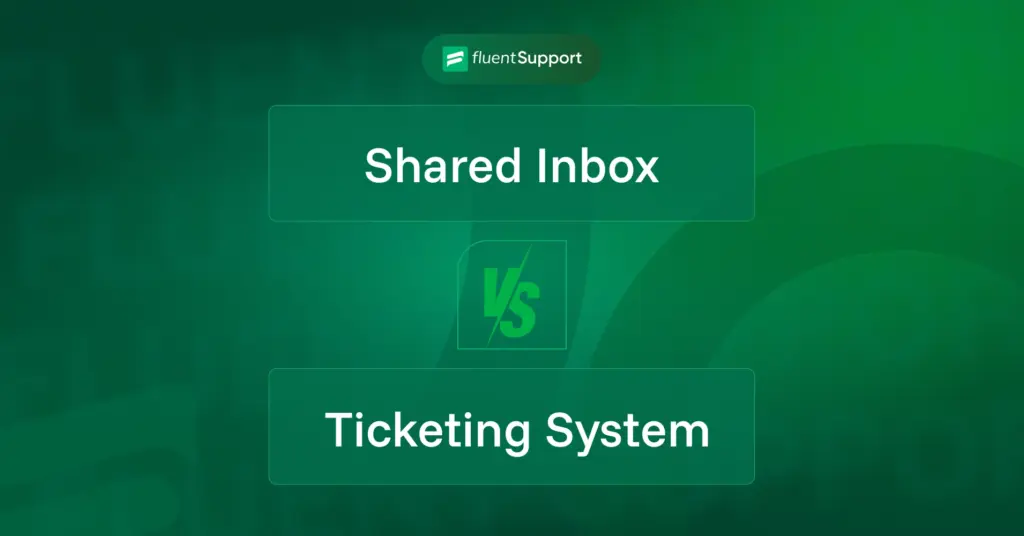
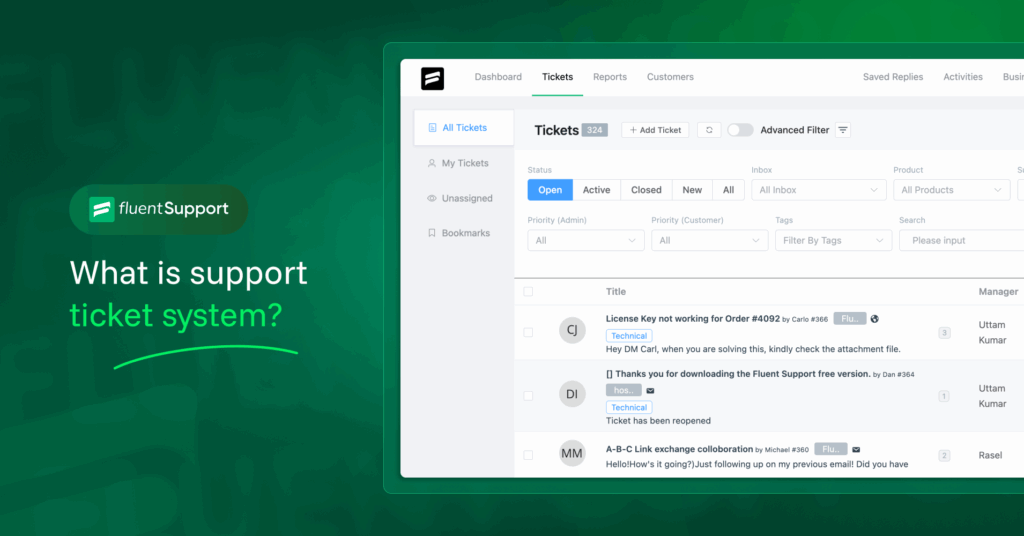





Leave a Reply